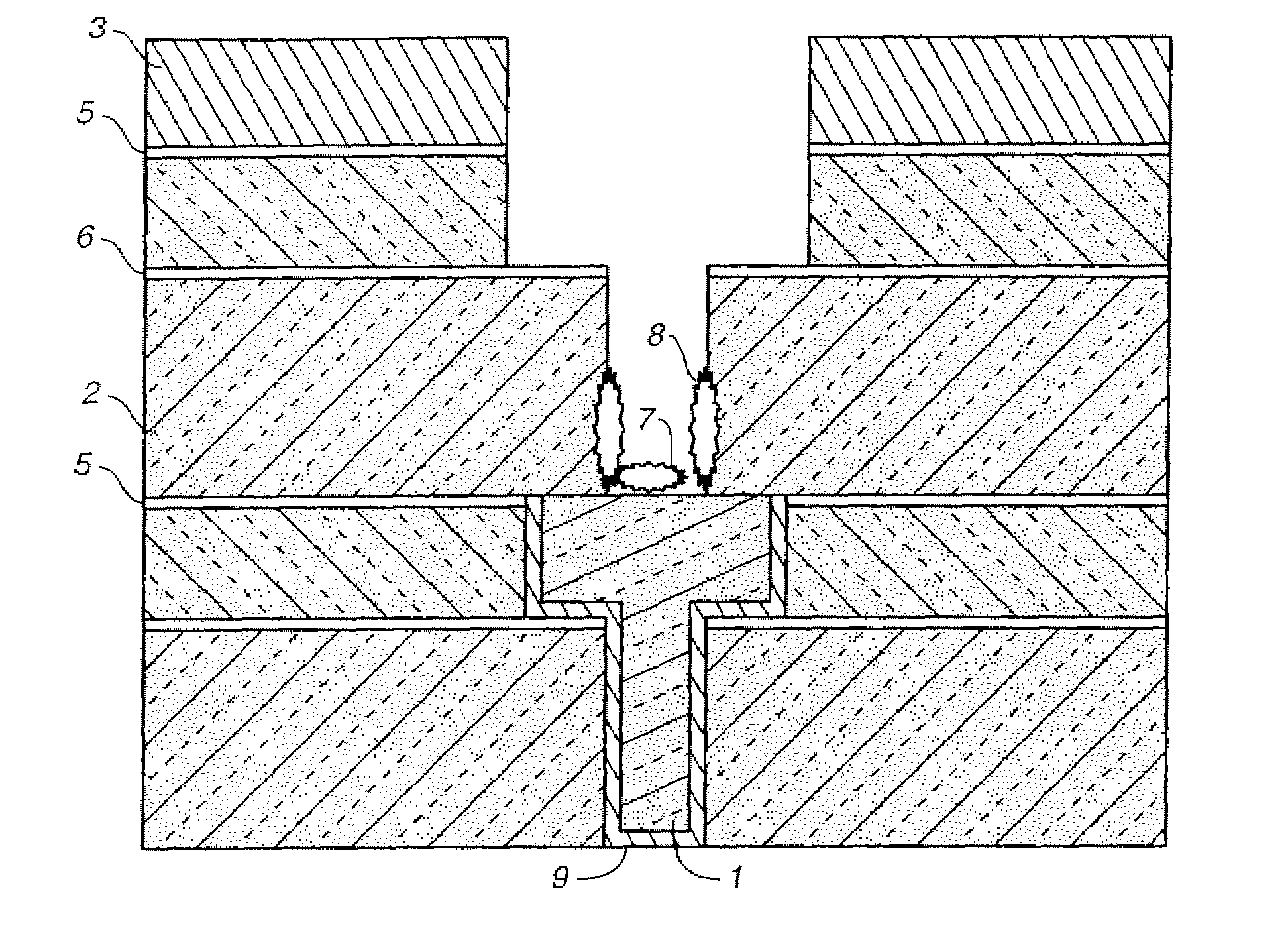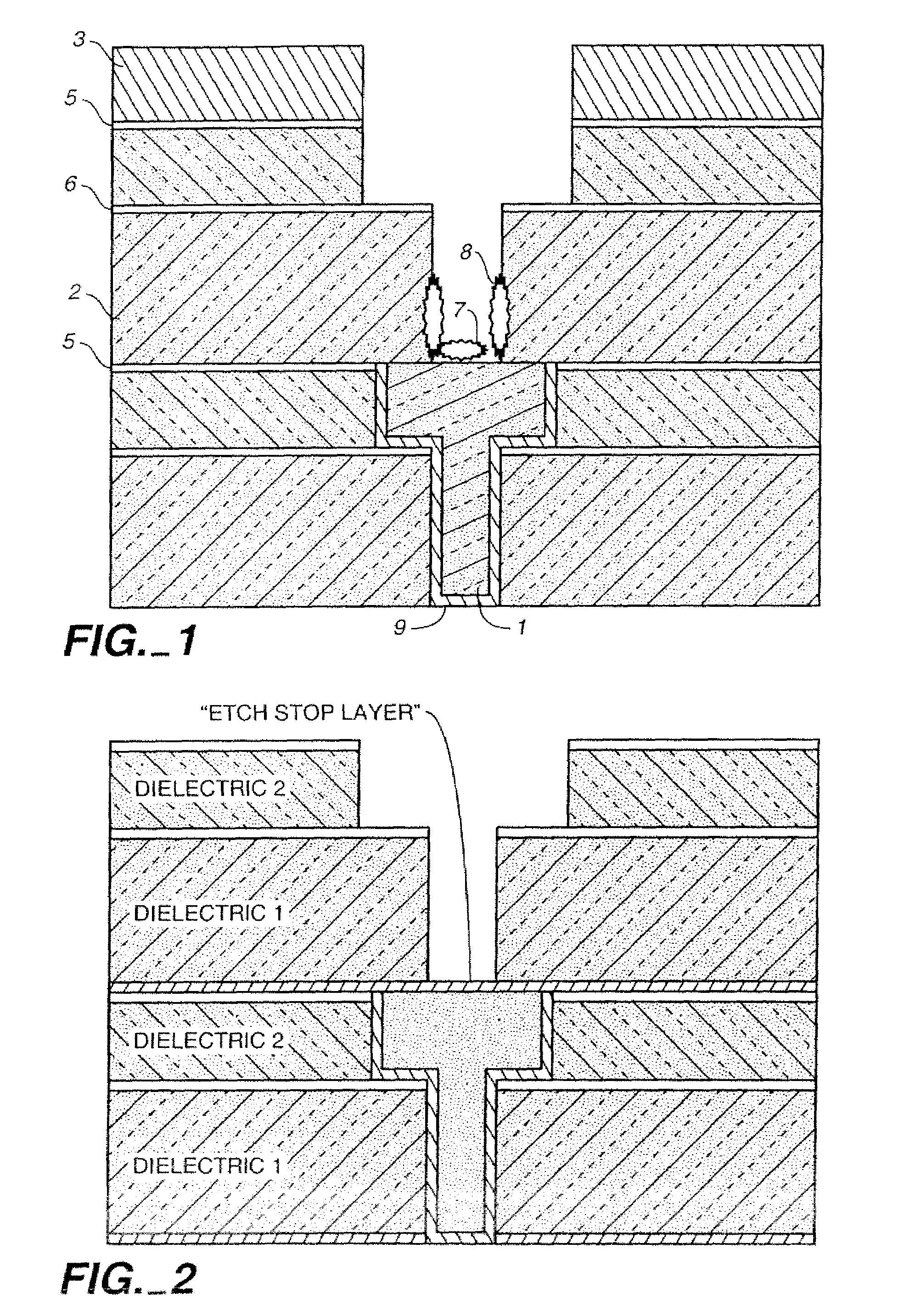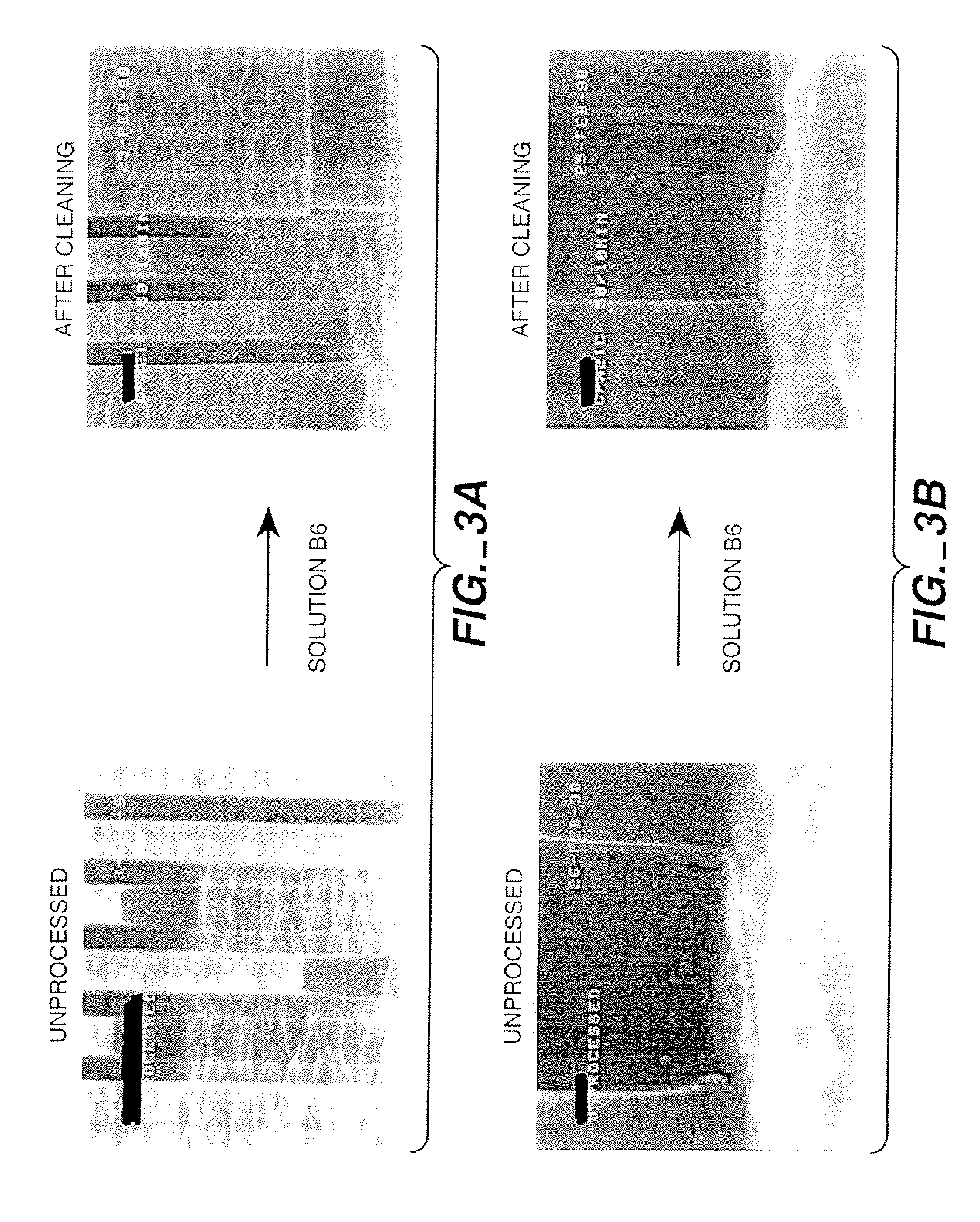Remover compositions for dual damascene system
a damascene and composition technology, applied in the field of semiconductor device manufacture, can solve the problems of limiting device performance, interconnect rc delay time, and limiting device speed factor, so as to reduce the foaming effect, and inhibit corrosion.
- Summary
- Abstract
- Description
- Claims
- Application Information
AI Technical Summary
Benefits of technology
Problems solved by technology
Method used
Image
Examples
Embodiment Construction
[0071]In the composition and process of this invention, the choline compound can be in the hydroxide or salt form, such as choline hydroxide, choline bicarbonate or choline chloride. As used herein, the term “choline compound” also embraces related quaternary ammonium compounds, such as tetramethylammonium hydroxide (TMAH), tetrabutyl ammonium hydroxide (TBAH), their salts, and the like.
[0072]Suitable organic solvents in the composition and for practice of the process include such polar solvents as dimethyl sulfoxide, ethylene glycol, ethylene glycol alkyl ether, diethylene glycol alkyl ether, triethylene glycol alkyl ether, propylene glycol, propylene glycol alkyl ether, N-substituted pyrrolidone, ethylene diamine and ethylene triamine. Additional polar solvents as known in the art can also be used in the composition of the present invention.
[0073]Optionally, a corrosion inhibitor may be included in a formulation used to clean damascene structures with exposed copper present. The c...
PUM
| Property | Measurement | Unit |
|---|---|---|
| feature sizes | aaaaa | aaaaa |
| temperatures | aaaaa | aaaaa |
| dielectric constant | aaaaa | aaaaa |
Abstract
Description
Claims
Application Information
 Login to View More
Login to View More - R&D
- Intellectual Property
- Life Sciences
- Materials
- Tech Scout
- Unparalleled Data Quality
- Higher Quality Content
- 60% Fewer Hallucinations
Browse by: Latest US Patents, China's latest patents, Technical Efficacy Thesaurus, Application Domain, Technology Topic, Popular Technical Reports.
© 2025 PatSnap. All rights reserved.Legal|Privacy policy|Modern Slavery Act Transparency Statement|Sitemap|About US| Contact US: help@patsnap.com



